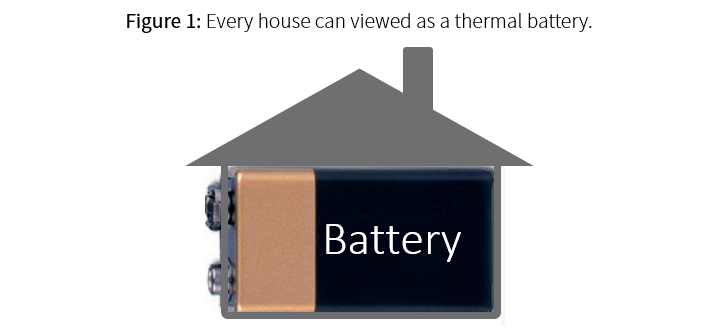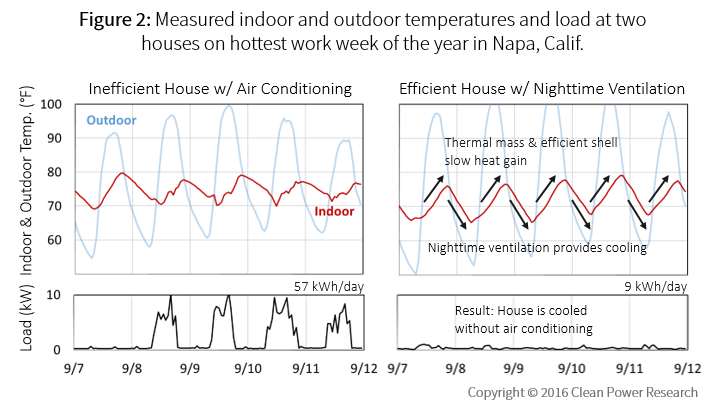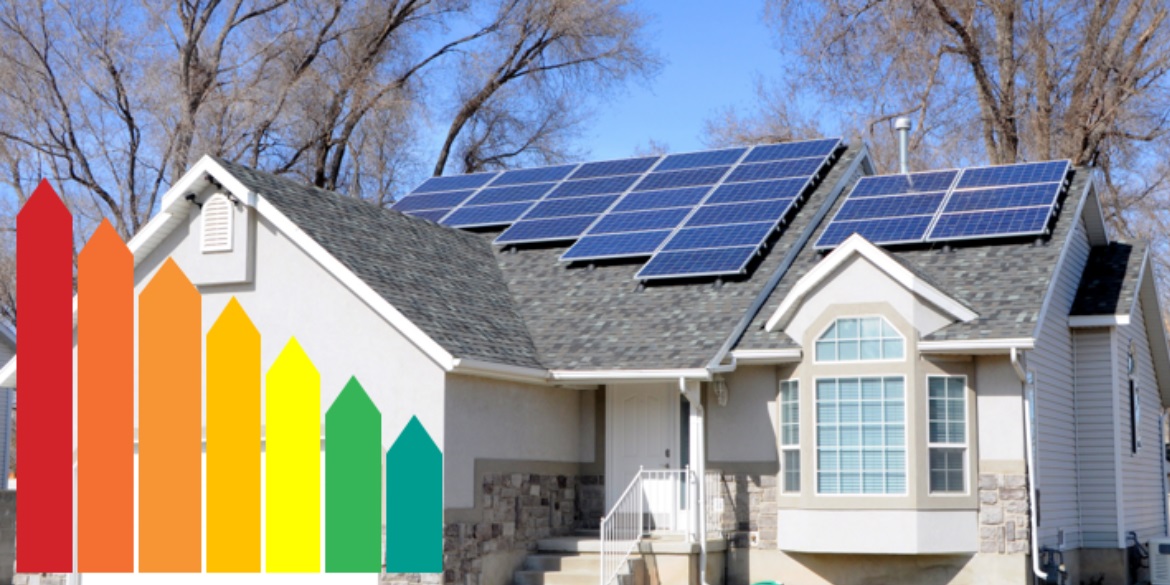This is the eighth article of an 11-part series on Solar+ homes. The series describes how homeowners can combine simple energy efficiency measures, solar PV, electric vehicles and appliance electrification to create households that are fully powered by solar electricity—even in existing homes. A Solar+ home provides substantial economic and environmental savings to the homeowner, and creates load profiles that are low-cost for utilities to serve.
Leveraging thermal mass to stay cool in summer
The previous blog described how to use an energy balance approach to analyze investments that reduce building energy consumption in winter. A slightly revised approach can be used to analyze investments in the summer. The energy balance in the summer requires that heat gain—which is the sum of occupancy, internal electric, solar and envelope gains—equals heat extracted from air conditioning (A/C).
There is an increasing desire to match consumption to PV production on a temporal basis. One approach is to assume that A/C loads should not be altered. This results in a mismatch between PV production and consumption, however, because A/C loads extend into the evening. Electric storage can be used to address this mismatch by transferring excess PV production from daytime to evening. Storage can be a costly alternative because it requires capital expenditures, variable operation costs and energy losses.
Another option is to use a home’s thermal mass to shift unmet A/C consumption from evening to daytime. This does not undermine the energy balance approach because it satisfies the requirement that indoor temperatures are the same at the beginning and end of the time period.
This can be a low cost alternative because every building is a thermal battery (see Figure 1). The thermal mass is free (it’s already part of the home), and the approach may only involve moderate additional energy losses.

The question is: How good of a thermal battery is the house? How does shifting consumption affect consumer comfort? Consumer comfort will be determined by how the temperature varies over time.
Eliminating air conditioning needs
A building’s thermal mass can be used in several ways. One approach is to shift A/C consumption from evening to earlier in the day by pre-cooling the building. This might be done to match A/C consumption to PV production. A more aggressive approach is to eliminate A/C consumption. This is accomplished by shifting free cool air from the night to the day using the building’s thermal mass and an efficient building shell.
Buildings can be operated using either a passive or an active approach. A passive approach maintains constant building shell efficiency throughout the day. Envelope gains will occur on hot summer days when outdoor temperatures exceed indoor temperatures. Envelope losses will occur on cool summer nights when indoor temperatures exceed outdoor temperatures. The losses will offset gains to some degree. The remainder of the gain needs to be satisfied using A/C.
An active approach is to temporarily change building shell efficiency throughout the day. In particular, reducing efficiency during the nighttime in order to increase envelope losses. This will cool the building at a faster rate.
The two thermal conductivity components that determine building shell efficiency are infiltration and conduction. The infiltration rate can be temporarily increased by opening windows or operating a whole house ventilation fan.
Demonstrating effectiveness during the hottest week of the year
Consider a simple example. Assume that outdoor temperatures exceed indoor temperatures for half of the day. Assume also that the outdoor temperatures average 20˚F higher than indoor temperatures during the day, and the outdoor temperatures average 5˚F lower than indoor temperatures during the night. Reducing building shell efficiency by a factor of four during the night would offset daytime heat gain with nighttime heat loss.
This, in fact, is exactly what happened on the hottest week of the year (2015) for the prototype house. Figure 2 presents measured data at two houses in Napa, Calif., throughout this hottest week of 2015 (September 7th through 11th). The graphs on the left are for a poorly insulated, 3,500 ft2 house that required A/C. The graphs on the right are for a well-insulated, 3,000 ft2 prototype house. The top graphs present indoor and outdoor temperatures. The bottom graphs present electricity consumption.

There are several things to notice:
- The two houses have similar indoor and outdoor temperatures.
- There is a large difference in energy consumption between the two houses.
The inefficient house required 57 kWh per day compared to the prototype house that required 9 kWh per day to maintain a comfortable indoor temperature. The inefficient house regularly had 10 kW of peak A/C demand to keep it cool, while the prototype house required no A/C to keep it cool; cooling was entirely accomplished using nighttime ventilation and the building’s thermal mass.
The hottest day of the year illustrates the details of what happened. Consider the temperatures at the prototype house over the 24-hour period starting at 9 p.m. on September 9th:
Sept. 9, 9:00 p.m.: Indoor and outdoor temperatures started at 78˚F. The ventilation strategy was started.
Sept. 10, 8:00 a.m.: The house cooled by 10˚F down to 68˚F. This was accomplished even though the outdoor temperature only averaged 6˚F below the indoor temperature.
Sept. 10, daytime: Temperatures reached 105˚ F—the hottest day of the year—and averaged 20˚F above the indoor temperature.
Sept. 10, 9:00 p.m.: It took 12 hours for the indoor temperature to reach 79˚F.
Key Takeaway
Building mass represents free thermal storage. Cooling at the prototype house was accomplished using no A/C at all during the entire period. It was accomplished by combining the building’s thermal mass, an efficient shell and cool air from the nighttime. The extreme case of eliminating A/C consumption used thermal mass and an efficient building shell. The easier case of shifting A/C consumption should be broadly applicable.
Don’t miss the next article in the series! Subscribe now to receive future updates about Solar+ homes.
To go to the next article in the Solar+ homes series, click here.
To go to the previous article, click here.
To jump to the first article in the series, click here.
